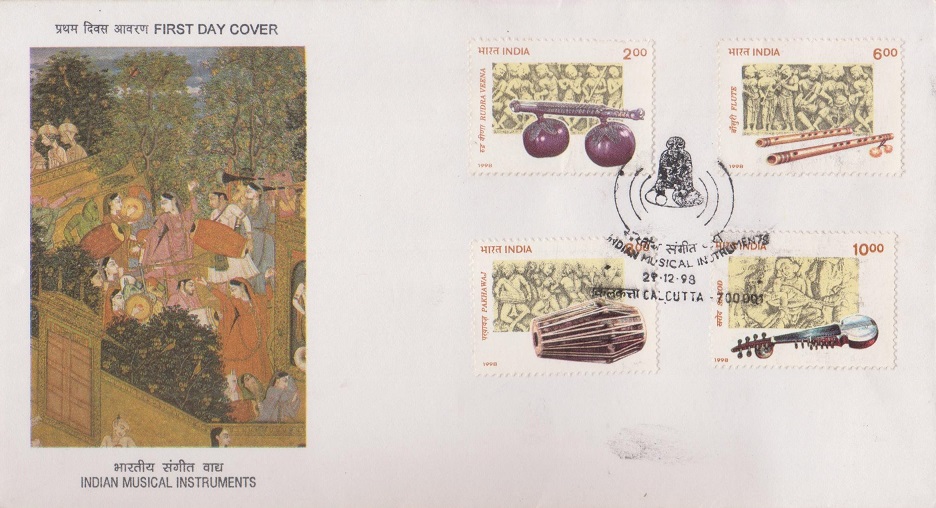
Indian Musical Instruments 1998
Complete Set of 4 nos of commemorative postage stamps on the Musical Instruments of India : Rudra Veena, Flute, Pakhawaj and Sarod :
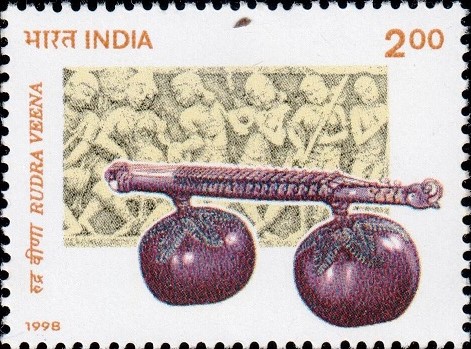

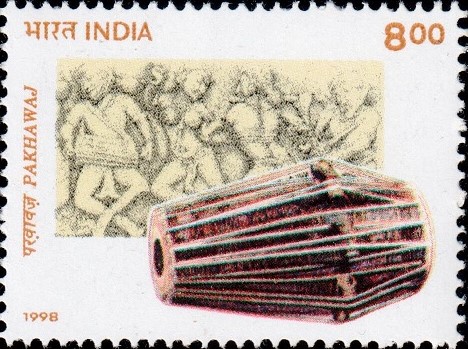
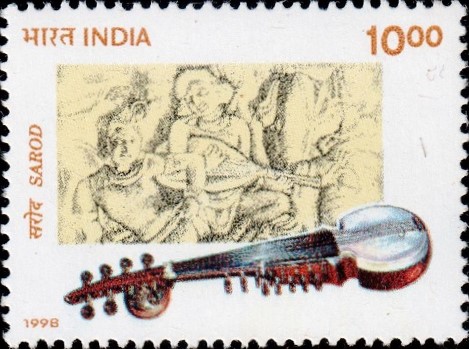

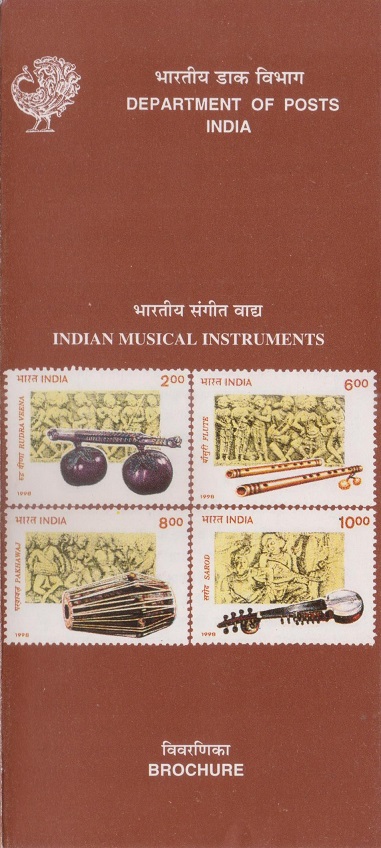 Issued by India
Issued by India
Issued on Dec 29, 1998
Issued for : The Department of Posts commemorates the Indian Musical tradition with issue of a set of four stamps on Indian Musical Instruments with a backdrop of panels from ancient stone carvings, featuring the particular instrument. Two of the stamps feature stringed instruments; Rudra veena and Sarod. The third stamp features Pakhawaj a percussion instrument and the fourth, Bansuri a wind instrument.
The First Day Cover depicts a 15th century Kangra painting, “Lady dancing to the tune of the dholak“.
Credits :
Stamp design : Sankha Samanta, based on photographs of the musical instruments from “Sharan Rani Backliwal Gallery of Musical Instruments”, National Museum, New Delhi. The designs were evolved in association with Smt. Sharan Rani.
Cancellation : Alka Sharma
Type : Stamps, Postal Used
Colour : Multi Colour
Denomination : 200, 600, 800 & 1000 Paise
Overall size : 3.91 x 2.90 cms.
Printing size : 3.55 x 2.54 cms.
Perforation : 13 x 13
Paper : Imported Unwatermarked Adhesive Gr. Coated Stamp Paper in Sheets 50.8 x 53.5 cms.
Stamps Printed : 0.7 Million
Number per issue sheet : 35
Printing Process : Photogravure
Printer : India Security Press, Nasik
About :
- The evolution of the musical tradition of India can be traced through ancient manuscripts and visual depictions of musical instruments in sculpture, paintings and objects from archaeological excavations. Musical instruments were classified into 4 main categories in the ‘Natya Shastra’ compiled by Bharat Muni (dated 200 BC-200 AD). This grouping done on the basis of how sound is produced, is universally accepted :–
- Tata Vadya or Chordophones (stretched stringed instruments both plucked and bowled) :
The sound is produced by the vibrations of strings, plucked by the fingers or a plectrum by means of friction. The various forms of the Veena including the ‘been’ of the north and ‘veena’ of the south, sarod, santoor, rabab, surbahar, sitar, gottuvadyam, tanpura are examples of stringed instruments. When the stone age caves of Bhimbetka, believed to be 10,000 years old, were discovered, the walls were found to have several layers of painting. The bow shaped harp seen in these paintings is said to be more than five thousand years old, perhaps the earliest evidence of stringed instruments in India.
- Sushira or Aerophones (hollow or wind instruments) :
The sound is produced by vibration of air. Two of the oldest instruments are Sankh and the ‘Bansuri’ also called ‘Murali’. Varieties of horn-types, including curved wind instruments were developed for performing in festivals, processions and temple singing. They were called by various names such as sringa, nara-sringa, ‘naga-todi’ and so on. Wind instruments have been depicted in stone carvings and paintings from pre-historic time onwards. Paintings seen in the Bhimbetka caves near Bhopal, Madhya Pradesh show a kind of trumpet. The gesture for playing the flute is depicted in almost all the dance styles. The horizontal flute is best suited to playing the slower passages or the ‘Alap’, in Indian music.
- Avanaddha Vadya or Membranophones (covered vessels or drums, percussion instruments) :
The sound is produced by the vibrations of stretched skin. Such instruments comprise ‘drums’, ‘rattles’, ‘pakhawaj’, ‘mridanga’, ‘dholak’, ‘tabla’, etc. The Pakhawaj is one of the most ancient drums of north India. It is a wooden barrel drum bulging in the middle and tapering towards the end. The playing position is similar to that of the ‘Mridangam’ of south India. The instrument accompanies vocal and instrumental music and provides rhythm in dance forms such as Kathak and Odissi.
- The Ghana Vadya or Idiophones :
The sound is produced by solids struck against each other, the vibration of the solid according to the cause of the vibration whether percussion or friction such as the ‘cymbal’, ‘gongs’, ‘ghanta’, ‘ghanti’, ‘ghungroo’, ‘kartal’ etc.
- Text : Publications of Sangeet Natak Academy.





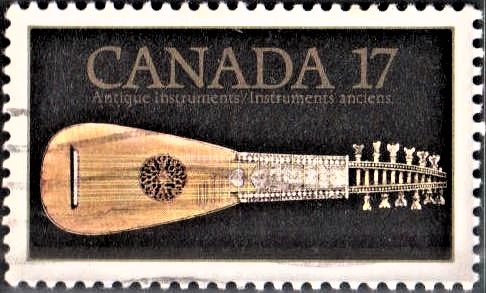

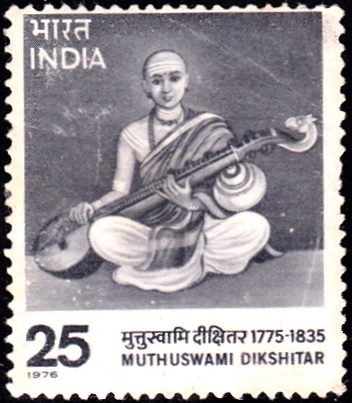
[…] his uncle and the court dancer of the Nawab of Awadh, for nearly ten years. He also learnt the Pakhawaj, the Tabla and vocal music, which helped to add many ornamentations to his style of dancing. He […]